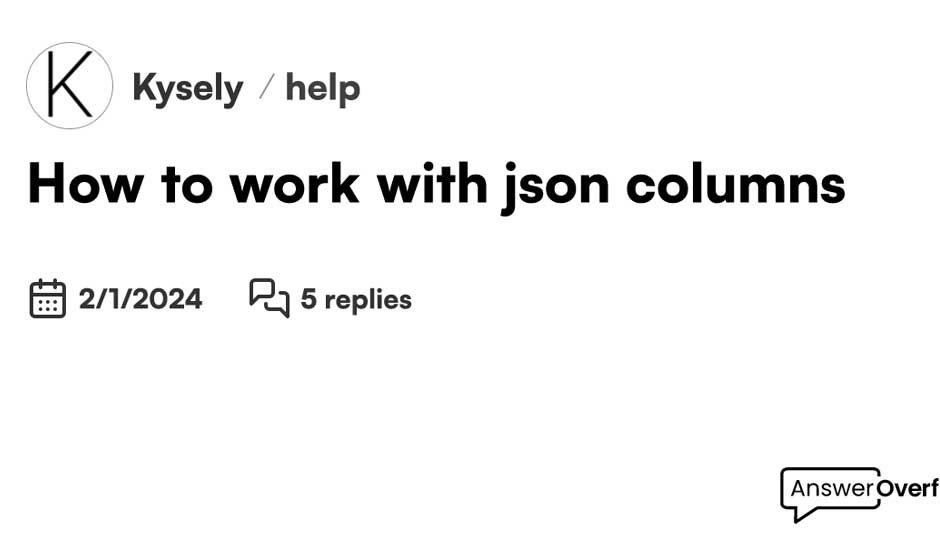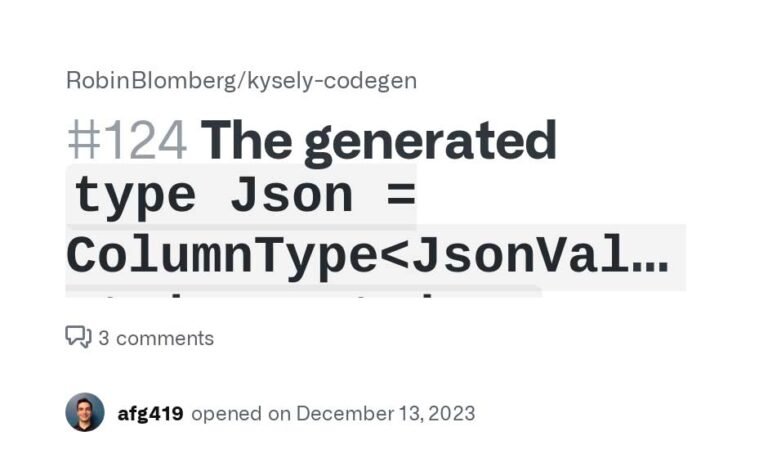As applications grow more dynamic, developers increasingly rely on JSON (JavaScript Object Notation) for handling complex data structures. Kysely, a modern type-safe SQL query builder for TypeScript, has emerged as a favorite among developers for managing database operations seamlessly. Among its many features, inserting JSON data stands out as both practical and powerful. This article explores how Kysely simplifies inserting JSON data into databases, breaking it down into clear, relatable steps.
Why JSON in Databases?
JSON is beloved for its flexibility. Whether you’re storing user preferences, product specifications, or nested data, JSON’s structured format makes it ideal for scenarios where rigid relational schemas might fall short. Databases like PostgreSQL and MySQL now support JSON natively, allowing you to leverage their power without sacrificing performance or readability.
Kysely, with its clean syntax and type-safe approach, complements this by making interactions with JSON data intuitive. If you’re new to Kysely, inserting JSON might feel like navigating uncharted territory—but it’s more straightforward than you’d think.

Getting Started: Setting the Stage
Before diving into JSON insertion, ensure your database and Kysely setup are ready:
Database Configuration:
Ensure your database supports JSON types. For example:
- PostgreSQL offers json and jsonb types.
- MySQL includes JSON as a data type.
Install Kysely:
Begin by integrating Kysely into your TypeScript project:
bash
npm install kysely
Define Your Schema:
Kysely works best with defined database schemas for type safety. For a table containing JSON data:
typescript
interface MyTable {
id: number;
data: object; // Replace with a specific type if known, e.g., `{ name: string; age: number }`
}
Inserting JSON with Kysely
Now that your setup is ready, let’s focus on inserting JSON into the database.
Prepare the Data:
Start by defining the JSON object you wish to insert:
typescript
const jsonData = { name: “Alice”, age: 30, hobbies: [“reading”, “hiking”] };
Kysely Insert JSON (Insert Using Kysely):
With Kysely, inserting JSON is similar to any other data type:
typescript
await db.insertInto(“my_table”).values({ data: jsonData }).execute();
Kysely automatically maps the jsonData object to the data column, ensuring type safety and clean code.
Handling JSON in jsonb Columns (PostgreSQL-Specific):
If your PostgreSQL table uses jsonb, the process remains identical. The difference lies in how PostgreSQL stores the data—jsonb allows for indexing and faster queries.
Advanced Use Cases
Batch Inserts:
Need to insert multiple JSON records? Kysely makes it effortless:
typescript
const batchData = [
{ data: { name: “Bob”, age: 25 } },
{ data: { name: “Charlie”, age: 40 } },
];
await db.insertInto(“my_table”).values(batchData).execute();
JSON Validation:
While Kysely ensures type safety during query construction, you can also validate your JSON with libraries like Joi or Zod before inserting it into the database.
Conclusion
Inserting JSON data using Kysely is both straightforward and efficient, marrying the flexibility of JSON with the power of type-safe SQL. Whether you’re storing user metadata, product configurations, or nested records, Kysely simplifies database operations without compromising on clarity or precision.
By integrating Kysely into your workflow, you not only improve your application’s scalability but also create a development process that’s as enjoyable as it is effective. With Kysely in your toolkit, handling JSON in databases is no longer a chore—it’s a craft.
